States of Germany
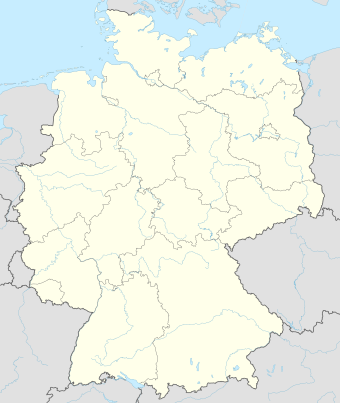
Lower Saxony ![]() Lower Saxony
Lower Saxony
Bremen![]() Bremen
Bremen
Hamburg ![]() Hamburg
Hamburg
Mecklenburg-Western Pomerania ![]() Mecklenburg-Western Pomerania
Mecklenburg-Western Pomerania
Saxony-Anhalt ![]() Saxony-Anhalt
Saxony-Anhalt
Saxony ![]() Saxony
Saxony
Brandenburg![]() Brandenburg
Brandenburg
Berlin ![]() Berlin
Berlin
Thuringia![]() Thuringia
Thuringia
Hesse ![]() Hesse
Hesse
North Rhine-Westphalia ![]() North Rhine-Westphalia
North Rhine-Westphalia
Rhineland-Palatinate![]() Rhineland-Palatinate
Rhineland-Palatinate
Bavaria ![]() Bavaria
Bavaria
Baden-Württemberg ![]() Baden-Württemberg
Baden-Württemberg
Saarland ![]() Saarland
Saarland
Schleswig-Holstein ![]() Schleswig-Holstein
Schleswig-Holstein
According to the federal constitutional system of the Federal Republic of Germany, a Land (official designation in legal terminology, often also called a federal state in common usage) is one of its partly sovereign constituent states. Since 1990, the Federal Republic has consisted of 16 Länder. According to the Basic Law, the Länder together form a sovereign federal state, not a loose confederation of states.
Staatsrecht
According to case law and the prevailing view in jurisprudence, the Länder have original state power and thus state quality. Their sovereignty and fundamental decision-making power is based on Article 30 of the Basic Law for the Federal Republic of Germany. However, they differ from ordinary states in that their (partial) subjectivity to international law is "derived [= derivative] from that of the Federation and is not original" and in this respect "competences in foreign affairs are granted to them by the Federal Constitution." Accordingly, the Länder can conclude treaties with other subjects of international law, but as a rule only with the consent of the federal government and insofar as they are responsible for legislation. Pre-existing state treaties such as the 1829 Saline Convention between Bavaria and Austria do not preclude this. Rather, the Länder are bound directly or also as successor states - as in the case of the Prussian Concordat, for example - by old state treaties.
The Federal Republic can be regarded as the union of its Länder under constitutional law, i.e. it is a federal state in the true sense of the term (Art. 20 GG). Accordingly, it is only through this connection of its constituent states that the Federation itself acquires the character of a state.
Politics
Political system
→ Main article: Land government (Germany), Land parliament and Bundesrat (Germany)
Politically, the Federal Republic of Germany is divided into 16 federal states. According to the form of government, all German Länder are parliamentary republics. The constitutional framework conditions of this form of government are prescribed by federal constitutional law, the so-called homogeneity requirement of the Basic Law (Art. 28 GG), whereby this requirement would in principle also permit a presidential form of government at Länder level.
Corresponding constitutional foundations can be found in the section "The Federation and the Länder", Art. 20-37 GG.
The countries in the European Union
Alongside the Federal Government and the German Bundestag, the Länder are an important actor in the political decision-making process - this also applies to German European policy. The Länder are integrated into the political system of the European Union through a variety of structures and institutions. The right of participation is legally secured by the treaties (TEU and TFEU), the Basic Law and individual accompanying laws.
In recent years, the Länder have adapted to the progressing European integration and created or expanded corresponding structures: In most Länder, Ministers for Europe coordinate the country's European policy. In the specialised ministries, separate departments or divisions have been set up to deal exclusively with European dossiers. Each Land has now set up its own representation in Brussels. The Land parliaments have set up European committees. Landtag administrations such as those in Bavaria, Baden-Württemberg and Hesse send special officials to Brussels to monitor current developments. Through all these measures, the Länder have been able to secure and selectively expand their influence on European policy decisions. Together, the Länder maintain the institution of the Observer of the Länder to the European Union, which has the task of supporting the Länder and the German Bundesrat in the exercise of their tasks and rights in EU matters.
The Treaty of Lisbon, in force since 1 December 2009, strengthens the countries in their right to represent their country-specific interests vis-à-vis the European institutions. For the first time, local self-government, divided into local municipalities and the supra-local districts, is enshrined in primary law. The principle of subsidiarity guarantees the competence of the Länder for all those areas which they can best realise themselves and which do not fall within the exclusive competence of the European Union (EU). In disputes over compliance with the principle of subsidiarity and in order to safeguard their own institutional rights, the Länder can make representations to the European Court of Justice through the Committee of the Regions (CoR).
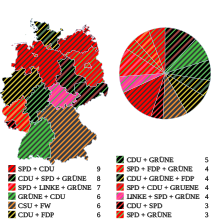
Governing parties and coalitions as well as votes of the Länder governments in the Bundesrat
Framework data of the countries
Official or own designations
In addition to eleven members of the Federation that officially call themselves a Land, Freistaat is part of the name of three (Bavaria, Saxony and Thuringia) and the name of the Land (designation in legal transactions) is part of the name of two other constituent states, Freie Hansestadt Bremen and Freie und Hansestadt Hamburg.
Apart from proper names in the minority languages Danish (Schleswig-Holstein: Delstat Slesvig-Holsten), Frisian (Schleswig-Holstein: Lönj Slaswik-Holstiinj), Lower Sorbian (Brandenburg: Kraj Bramborska) and Upper Sorbian (Saxony: Swobodny stat Sakska), there are also names of some Länder in Low German.
Politics
| Coat of arms | Country | Abbreviation | Capital | Most populous city in | Accession to the Confederation | Head of government | Governing party | Federal Council votes | Area | Inhabitant | Population per | Foreigners | Languages |
|
| Baden-Württemberg | BW | Stuttgart | 1949 | Winfried Kretschmann (Greens) | Greens and CDU | 6 | 35.748 | 11,070 | 310 | 15,5 | German | |
|
| Bavaria | BY | Munich | 1949 | Markus Söder (CSU) | CSU and Free Voters | 6 | 70.542 | 13,077 | 185 | 13,2 | German | |
|
| Berlin | BE | - — | 1990 | Michael Müller (SPD) | SPD, Left and Greens | 4 | 891 | 3,645 | 4090 | 18,5 | German | |
|
| Brandenburg | BB | Potsdam | 1990 | Dietmar Woidke (SPD) | SPD, CDU and Greens | 4 | 29.654 | 2,512 | 85 | 4,7 | German, Lower Sorbian, Low German | |
|
| Bremen | HB | Bremen | 1949 | Andreas Bovenschulte (SPD) | SPD, Greens and Left | 3 | 419 | 0,683 | 1629 | 18,1 | German, Low German | |
|
| Hamburg | HH | - — | 1949 | Peter Tschentscher (SPD) | SPD and Greens | 3 | 755 | 1,841 | 2438 | 16,4 | German, Low German | |
|
| Hesse | HE | Wiesbaden | Frankfurt on the Main | 1949 | Volker Bouffier (CDU) | CDU and Greens | 5 | 21.116 | 6,266 | 297 | 16,2 | German |
|
| Mecklenburg-Western Pomerania | MV | Schwerin | Rostock | 1990 | Manuela Schwesig (SPD) | SPD and CDU | 3 | 23.295 | 1,610 | 69 | 4,5 | German, Low German |
|
| Lower Saxony | NI | Hanover | 1949 | Stephan Weil (SPD) | SPD and CDU | 6 | 47.710 | 7,982 | 167 | 9,4 | German, Sater Frisian, Low German | |
|
| North Rhine-Westphalia | NW | Düsseldorf | Cologne | 1949 | Armin Laschet (CDU) | CDU and FDP | 6 | 34.112 | 17,933 | 526 | 13,3 | German, Low German |
|
| Rhineland-Palatinate | RP | Mainz | 1949 | Malu Dreyer (SPD) | SPD, Greens and FDP | 4 | 19.858 | 4,085 | 206 | 11,1 | German | |
|
| Saarland | SL | Saarbrücken | 1957 | Tobias Hans (CDU) | CDU and SPD | 3 | 2.571 | 0,991 | 385 | 11,1 | German | |
|
| Saxony | SN | Dresden | Leipzig | 1990 | Michael Kretschmer (CDU) | CDU, Greens and SPD | 4 | 18.450 | 4,078 | 221 | 4,9 | German, Upper Sorbian |
|
| Saxony-Anhalt | ST | Magdeburg | Halle (Saale) | 1990 | Reiner Haseloff (CDU) | CDU, SPD and Greens | 4 | 20.454 | 2,208 | 108 | 4,9 | German, Low German |
|
| Schleswig-Holstein | SH | Kiel | 1949 | Daniel Günther (CDU) | CDU, Greens and FDP | 4 | 15.804 | 2,897 | 183 | 8,0 | German, Danish, North Frisian, Low German or Low German and Romani | |
|
| Thuringia | TH | Erfurt | 1990 | Bodo Ramelow (Left) | Left, SPD and Greens | 4 | 16.202 | 2,143 | 132 | 4,9 | German | |
|
| Federal Republic of Germany (DE) | EN | Berlin | - — | Angela Merkel (CDU) | CDU/CSU and SPD | b — | 357.582 | 83,019 | 232 | 12,2 | German (official language) and the recognised minority languages in the | |
Status: 19 May 2021.
The population figures are updates of the Federal Statistical Office rounded to the nearest thousand - uniform for 31 December 2018.
a In five of the 16 federal states, the most populous city is not the state capital. However, the state capital is the second most populous city in each of these states.
b The Federal Government has no votes in the Bundesrat, the total number of votes of all Länder is 69.
Economy
| Coat of arms | Country | GDP (2018) | Per capita (2018) | EK/Kin | Debt (2012) | Per capita (2012) | Debt (31.12.2018) | Per capita (31.12.2018) | AQ |
|
| BW | 511,4 | 46.279 | 000000000019261.000000000019.261 | 000000000000067.471000000067,471 | 000000000006255.00000000006.255 | 000000000000044.009000000044,009 | 000000000003976.00000000003.976 | 000000000000003.90000000003,9 |
|
| BY | 625,2 | 47.946 | 000000000018775.000000000018.775 | 000000000000042.794000000042,794 | 000000000003397.00000000003.397 | 000000000000014.613000000014,613 | 000000000001117.00000000001.117 | 000000000000003.80000000003,8 |
|
| BE | 147,1 | 40.568 | 000000000014797.000000000014.797 | 000000000000061.220000000061,220 | 000000000017482.000000000017.482 | 000000000000054.403000000054,403 | 000000000014926.000000000014.926 | 000000000000009.80000000009,8 |
|
| BB | 73,7 | 29.411 | 000000000014634.000000000014.634 | 000000000000021.336000000021,336 | 000000000008549.00000000008.549 | 000000000000016.122000000016,122 | 000000000006418.00000000006.418 | 000000000000008.20000000008,2 |
|
| HB | 34,3 | 50.389 | 000000000019933.000000000019.933 | 000000000000019.660000000019,660 | 000000000029729.000000000029.729 | 000000000000021.730000000021,730 | 000000000031816.000000000031.816 | 000000000000010.500000000010,5 |
|
| HH | 120,3 | 65.603 | 000000000022908.000000000022.908 | 000000000000024.256000000024,256 | 000000000013484.000000000013.484 | 000000000000034.362000000034,362 | 000000000018663.000000000018.663 | 000000000000007.20000000007,2 |
|
| HE | 292,0 | 46.719 | 000000000018658.000000000018.658 | 000000000000055.497000000055,497 | 000000000009110.00000000009.110 | 000000000000040.396000000040,396 | 000000000006447.00000000006.447 | 000000000000005.40000000005,4 |
|
| MV | 44,9 | 27.905 | 000000000013953.000000000013.953 | 000000000000012.222000000012,222 | 000000000007476.00000000007.476 | 000000000000007.65300000007,653 | 000000000004754.00000000004.754 | 000000000000010.300000000010,3 |
|
| NI | 296,2 | 37.118 | 000000000017105.000000000017.105 | 000000000000069.557000000069,557 | 000000000008790.00000000008.790 | 000000000000058.718000000058,718 | 000000000007356.00000000007.356 | 000000000000006.20000000006,2 |
|
| NW | 705,1 | 39.358 | 000000000018724.000000000018.724 | 000000000000237.4970000000237,497 | 000000000013311.000000000013.311 | 000000000000167.1670000000167,167 | 000000000009322.00000000009.322 | 000000000000007.70000000007,7 |
|
| RP | 149,1 | 36.573 | 000000000017101.000000000017.101 | 000000000000044.097000000044,097 | 000000000011027.000000000011.027 | 000000000000030.637000000030,637 | 000000000007500.00000000007.500 | 000000000000005.40000000005,4 |
|
| SL | 36,0 | 36.243 | 000000000017138.000000000017.138 | 000000000000016.015000000016,015 | 000000000015804.000000000015.804 | 000000000000013.812000000013,812 | 000000000013944.000000000013.944 | 000000000000007.20000000007,2 |
|
| SN | 126,4 | 31.008 | 000000000014599.000000000014.599 | 000000000000009.60000000009,600 | 000000000002320.00000000002.320 | 000000000000001.40900000001,409 | 000000000000346.0000000000346 | 000000000000007.50000000007,5 |
|
| ST | 63,5 | 28.685 | 000000000014005.000000000014.005 | 000000000000024.330000000024,330 | 000000000010518.000000000010.518 | 000000000000019.932000000019,932 | 000000000009026.00000000009.026 | 000000000000009.80000000009,8 |
|
| SH | 97,1 | 33.555 | 000000000016920.000000000016.920 | 000000000000031.314000000031,314 | 000000000011035.000000000011.035 | 000000000000030.913000000030,913 | 000000000010672.000000000010.672 | 000000000000006.60000000006,6 |
|
| TH | 63,8 | 29.739 | 000000000014152.000000000014.152 | 000000000000018.925000000018,925 | 000000000008520.00000000008.520 | 000000000000014.646000000014,646 | 000000000006834.00000000006.834 | 000000000000007.00000000007,0 |
|
| EN | 3.386,0 | 40.851 | 000000000017702.000000000017.702 | 000000000001286.19000000001.286,190 | 000000000015715.000000000015.715 | 000000000001213.21700000001.213,217 | 000000000014613.000000000014.613 | 000000000000006.60000000006,6 |
|
| EU | 000000000023100.000000000023.100 | 6,3 | ||||||
* Old numbers

Isodemographic map of Germany
Official designations and flags of the German Länder
→ Main article: List of flags of German states
|
Country Baden-Wuerttemberg |
Free State of Bavaria |
Land Berlin |
State of Brandenburg |
|
Free Hanseatic City of Bremen |
Free and Hanseatic City of Hamburg |
State of Hesse |
State of Mecklenburg-Western Pomerania |
|
State of Lower Saxony |
State of North Rhine-Westphalia |
Rhineland-Palatinate |
Saarland |
|
Free State of Saxony |
State of Saxony-Anhalt |
State of Schleswig-Holstein |
Free State of Thuringia |
The national flags of the countries are shown here. They may be displayed in public by any citizen. The state service flags, on the other hand, are severely restricted in their use - they may only be used by the respective state authorities.
The Free State of Bavaria has two equal state flags: the first is the flag shown here with horizontal stripes in the colours white and blue, the second is a white and blue checkered flag (→ Bavarian state flag).
In the following Länder there is no difference between the state flag and the state service flag: Bavaria, Berlin, Brandenburg, Hamburg, Lower Saxony, Rhineland-Palatinate and Saarland. The Bremen state flags with arms (in two variants) may also be used by citizens.
The state service flags of the following states also show the state coat of arms: Baden-Württemberg, Hesse, North Rhine-Westphalia, Saxony, Saxony-Anhalt, Schleswig-Holstein, Thuringia. The state service flag of Mecklenburg-Western Pomerania shows the heraldic figures of Mecklenburg and Pomerania without the escutcheon.
.svg.png)
Germany with its federal states, depicted with national colours and coat of arms
Outline of the countries
The city states of Berlin and Hamburg are each simultaneously a Land and a city and are therefore not further subdivided into municipalities; the local and supra-local levels coincide. The state of Bremen consists of the independent cities of Bremen and Bremerhaven. In the other German Länder there are the following administrative and self-governing units:
- Government districts: The large states of Baden-Württemberg, Bavaria, Hesse and North Rhine-Westphalia are divided into government districts. The districts are decentralised units of the state administration. The subdivisions of the states of Lower Saxony (until 2004), Rhineland-Palatinate (until 1999), Saxony-Anhalt (until 2003) and Saxony (until 2012) were abolished. In Rhineland-Palatinate, the three regional councils were replaced by two structural and approval directorates and one supervisory and service directorate. In addition, the Palatinate region has the Bezirksverband Pfalz, which was established at the beginning of the 19th century. In North Rhine-Westphalia and Lower Saxony there are also regional associations. In Saxony, where the Regierungsbezirke were transformed into so-called Landesdirektionen in 2008, the intermediate authorities were abolished in favour of a new higher state authority, the Landesdirektion Sachsen.
- Counties and independent cities: Every territorial state is divided into counties (called Kreise in North Rhine-Westphalia and Schleswig-Holstein). There are currently a total of 295 administrative districts in the Federal Republic of Germany (including the Aachen city region, the Hanover region and the Saarbrücken regional association). In addition, there are 107 independent cities (including the two independent cities in Bremen), which do not belong to a Landkreis but perform the tasks of the Landkreise themselves, thus forming their own Kreis. For this reason, they were referred to as city districts in the eastern German Länder until 1994 and are still referred to as city districts in Baden-Württemberg today. The Landkreise are territorial authorities with directly elected bodies.
- Municipal associations: In some Länder there are municipal associations or administrative communities in different forms and with different tasks as an intermediate stage of municipal work between the district and the municipalities. They therefore have very different names depending on the Land, e.g. Amt (BB, MV, SH), Samtgemeinde (NI), Verbandsgemeinde (RP, ST) or Gemeindeverwaltungsverband (BW) (for this see Gesamtgemeinde).
- Municipalities: Municipalities are the smallest independent territorial units. In Germany there are currently 12,320 municipalities and 248 municipality-free areas (as of 1 March 2006). Cities are usually municipalities that may only use the designation city (cf. city law). This is either historically documented and was usually associated with numerous privileges in the Middle Ages (e.g. own taxes), or they are larger municipalities which are newly given the designation city due to their current importance and tasks (this is handled very differently depending on the country). For the capital of a Land, the designation Land capital has become established. The municipalities are also territorial authorities with directly elected bodies.
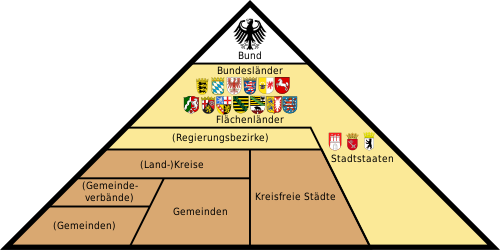
Germany's vertical state structure
History of the German Länder since 1945
For the federal members of the German Empire see the division of the German Empire 1871-1918
While the principle of federalism in Germany, and thus its composition of Länder, goes back to the Middle Ages, the specific structure, the individual Länder, has always been subject to strong breaks in continuity: In 1792, the Holy Roman Empire had more than 300 territories, some of them tiny, while in 1815 the German Confederation had only 38 in the same area; 25 of these founded the new German Empire in 1871, became republics in 1918, like the state as a whole, and were reduced to administrative units in 1934 as part of the National Socialist policy of equalisation - the Länder had now almost completely lost their constituent character.
The territorial reorganisation of Germany into Länder by the Allies after 1945 was only a partial continuation of the old structures; accordingly, they are a purposefully created result that ignores historical and regional contexts. Many countries are completely new creations. In particular, the overpowering Prussia was dissolved and its provinces partly transformed into independent Länder. The borders of the occupation zones were decisive for the layout of the newly founded Länder: With the exception of the former capital of the Reich, Berlin, each Land and its entire territory was subject to a single occupying power.
The territories of the occupied German Reich were divided up and the first Länder were founded in the Soviet occupation zone in July 1945. However, for a future Germany (without Austria, which had become a state again), the Soviets pursued the concept of a centralised state in which the Länder would merely be administrative units. This was opposed by the concept of a federal state, preferred above all by the US Americans, in which the Länder were also to play an important political role.
On the basis of "Proclamation No. 2", the first Länder with this orientation came into being in the US occupation zone on 19 September 1945. Within the four occupation zones on the territory of today's Federal Republic of Germany, there were 16 Länder as of 21 January 1947, which were essentially formed from the following areas:
- American Occupation Zone:
- Bavaria: Main part of the state of Bavaria, whereby the administrative district of Lindau (Lake Constance) including the city of Lindau, which was independent of the district as of 25 September 1948, belonged to the French occupation zone.
- Bremen: Land of Bremen (although as an exclave it was surrounded by British occupied territory, but the US claimed a seaport for their supplies).
- Hesse (Greater Hesse): Main part of the Volksstaat Hesse, main part of the Prussian province of Hesse-Nassau.
- Württemberg-Baden: Northern part of the state of Württemberg, northern part of the state of Baden
- British Occupation Zone:
- Hamburg: Land Hamburg
- Lower Saxony: States of Hanover (re-established as an independent state after intervening Prussian affiliation as the Province of Hanover 1866-1946), Brunswick, Oldenburg and Schaumburg-Lippe.
- North Rhine-Westphalia (by Military Order No. 46 of 23 August 1946): North Rhine or northern part of the Prussian Rhine Province (administrative districts of Aachen, Düsseldorf and Cologne), the Prussian Province of Westphalia and the Land of Lippe (subsequent incorporation by Military Order No. 77 of 21 January 1947).
- Schleswig-Holstein: Prussian province of Schleswig-Holstein
- French occupation zone:
- Baden: Southern part of Baden
- Rhineland-Palatinate: southern part of the Prussian Rhine Province (administrative districts of Koblenz and Trier), western part of the Prussian province of Hesse-Nassau (→ province of Rhineland-Hesse-Nassau), south-western part of the state of Hesse (Rhinehesse), Bavarian Palatinate
- Württemberg-Hohenzollern: Southern part of the state of Württemberg, Prussian exclave of Hohenzollern, administrative district of Lindau (Lake Constance) including the city of Lindau (Lake Constance), which has been a district-free city since 25 September 1948
- Soviet Occupation Zone (→ Land (GDR)):
- Brandenburg: Prussian province of Brandenburg west of the Oder and Lusatian Neisse rivers
- Mecklenburg: Land of Mecklenburg, Western Pomerania (western part of the Prussian province of Pomerania)
- Saxony: Land of Saxony, part of the Prussian province of Lower Silesia west of the Neisse River
- Saxony-Anhalt: main part of the Prussian province of Saxony, Land Anhalt
- Thuringia: Land Thüringen, Regierungsbezirk Erfurt (southern part of the Prussian province of Saxony)
- Berlin, the German capital, was a divided city under the Four Power Statute and, in accordance with its four-power status, was the seat of the Allied Control Council in Germany.
- The Saarland was removed from the jurisdiction of the Control Council in January 1946 and received its own constitution in 1947 as the Saar Protectorate.
See also: List of German administrative units 1945-1949
Chronology
On 23 August 1946, the states of Hanover (later merged with the states of Braunschweig, Oldenburg and Schaumburg-Lippe to form the state of Lower Saxony), North Rhine-Westphalia and Schleswig-Holstein came into being as a result of Decree No. 46 of the British Military Government on the "Dissolution of the Provinces of the Former Land of Prussia in the British Zone and their Re-formation as Independent States". Hamburg remained an independent state. The state of Rhineland-Palatinate was also created in 1946 by decree of the French military government.
In 1947, the former state of Lippe had to give up its independence at the behest of the British occupying power. After negotiations with the two neighbouring states of Lower Saxony and North Rhine-Westphalia, the Lippe government decided to join the latter. In the Lippische Punktationen, the governments of Lippe and North Rhine-Westphalia agreed on the future consideration of Lippean interests. On 21 January 1947, unification came into effect through British Military Order No. 77. According to this decree, a reorganisation could have been ordered after a referendum to be held within five years, but this was not done. On 5 November 1948, the "Law on the Unification of the State of Lippe with North Rhine-Westphalia" was passed by the North Rhine-Westphalian state parliament.
The Hessian Constitution was adopted by the Constitutional Advisory State Assembly in Wiesbaden on 29 October 1946, came into force by referendum on 1 December 1946 and was thus the first post-war constitution in Germany. This was followed by the Constitution of the Free State of Bavaria, which was adopted by referendum on 1 December 1946.
On 25 February 1947, the Allied Control Council decided to dissolve Prussia by Control Council Law No. 46. Until then, the Free State of Prussia with its provinces still existed insofar as Brandenburg and Saxony-Anhalt in the Soviet occupation zone were not referred to as Länder but as provinces in their first constitutions, whereas, for example, the dissolution of the Prussian provinces had already been explicitly mentioned in 1946 during the formation of Länder in the British zone (cf. above). On 28 February 1947, the state constitution of Saxony was adopted.
The Basic Law for the Federal Republic of Germany was promulgated on 23 May 1949. The Länder of Schleswig-Holstein, Lower Saxony, Hamburg, Bremen, North Rhine-Westphalia, Rhineland-Palatinate, Hesse, Württemberg-Baden, Baden, Württemberg-Hohenzollern and Bavaria joined the area of application of the Basic Law. Berlin (West) always had a special status - also according to the Four-Power Agreement - even though it was considered a federal state ("Groß-Berlin") according to Article 23 GG (old version).
As the first structural reform since the founding of the Federal Republic of Germany, Baden, Württemberg-Baden and Württemberg-Hohenzollern were united to form the state of Baden-Württemberg on 25 April 1952. In the
same year, the Länder in the GDR
were not formally dissolved, but were deprived of their state powers, which was tantamount to a de facto dissolution; 14 districts took their place. The law did not affect the eastern sector of Berlin, which was not itself a GDR state. It was not until a decree of the GDR Council of State in 1961 that "Berlin", in the sense of East Berlin, was officially assigned the status of a district as the "capital of the German Democratic Republic".
The Saarland, nominally independent since 1947, joined the scope of the Basic Law of the Federal Republic of Germany on 1 January 1957 after a referendum - whether as the tenth or eleventh state depends on how one retrospectively assesses the controversial and constitutionally complicated status of West Berlin under international law. According to the state constitution, "Saarland is [henceforth] a democratically and socially ordered federal state." The unilateral economic union of the Saarland with France remained in place until 1959.
· 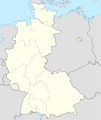
State borders of the Federal Republic in October 1949.
· 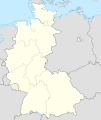
After the founding of Baden-Württemberg in April 1952.
· 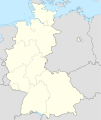
January 1957 - October 1990, after the Saarland had joined the Federal Republic.
· 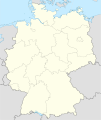
After the establishment of German unity on 3 October 1990.
· 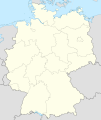
Current country boundaries with changes from 1992, 1993 and 2010.
See also: Germany 1945 to 1949
South West State
→ Main article: The path to the south-western state of Baden-Württemberg
After the Second World War, the northern parts of Baden and Württemberg became part of the American occupation zone, while the southern parts and Hohenzollern became part of the French zone. The military governments of the occupation zones founded the states of Württemberg-Baden in the American zone and Württemberg-Hohenzollern and Baden in the French zone in 1945/46. These states became part of the Federal Republic of Germany on 23 May 1949.
On 9 December 1951, the referendum on the founding of Baden-Württemberg took place. In the vote, voters in both parts of Württemberg voted 93% in favour of the merger, in North Baden 57%, while in South Baden only 38% were in favour. In three out of four voting districts there was a majority in favour of the formation of the south-west state, so that the formation of a south-west state was decided. As a result, the states were united on 25 April 1952 and the state of Baden-Württemberg was founded.
The five "new countries
→ Main article: New countries
In July 1990, the Ländereinführungsgesetz was passed, abolishing the districts on the territory of the GDR and re-establishing the five Länder that had been disempowered in 1952 in favour of the districts (Mecklenburg was given back the name Mecklenburg-Vorpommern, which it had already had from 1945 to 1947).
On 3 October 1990, the law came into force, making them Länder of the Federal Republic of Germany, just like Berlin, whose western part had already been "not a constituent part of the Federal Republic" until then due to the Allied right of reservation (four-sector city). The internal borders between the new federal states were redefined during the reconstruction.
See also: West German Länder
Discussions on the reorganisation of the federal territory after 1952 and 1990 respectively
A reorganisation of the federal territory on the basis of Article 29 of the Basic Law was repeatedly introduced into the political discussion in the "old" Länder after 1952 and in the "new" Länder including Berlin after 1990.
Merger initiatives
In 1996, a merger of Berlin and Brandenburg sought by the two state governments failed due to the rejection of the Brandenburg population. Although Art. 118a of the Basic Law would explicitly allow for simplified merger regulations, the procedure according to Art. 29 was used for political considerations.
The unification of two Länder or other territorial changes, such as separation or partial reorganisation (pursuant to Art. 29, paras. 2 and 3, as well as the federal referendum pursuant to Art. 29, para. 4, GG), are the only specifically cited case (except for Art. 146, new Constitution) in which the Basic Law provides for a referendum.
Separation initiatives
In addition to mergers, divisions are also being discussed. On 19 January 1975, for example, a referendum was held in the former states of Oldenburg and Schaumburg-Lippe to restore them. Although a majority of those voting were in favour of separating their territories from Lower Saxony, the German Bundestag did not follow this vote. The Federal Constitutional Court confirmed the view of the MPs. The "Franconian Federation", which has existed under this name since 1991, is calling for Franconia to secede from the Free State of Bavaria. In Baden, a "Landesvereinigung Baden in Europa" (Baden in Europe Regional Association) has been standing up for the interests of Baden and its former state capital Karlsruhe and against too much centralism on the part of Stuttgart since 1992.
Since, according to the "Oldenburg ruling", the Federal Constitutional Court sees the purpose of Article 29 of the Basic Law as being that a reorganisation of the Länder should result in more efficient Länder that entail less administrative work, it is questionable whether referendums can increase the number of Länder.
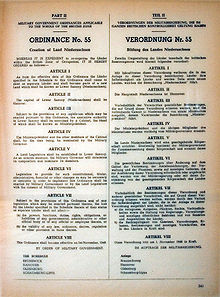
Decree No. 55, by which on 22 November 1946 the British Military Government established the State of Lower Saxony with retroactive effect from 1 November 1946.
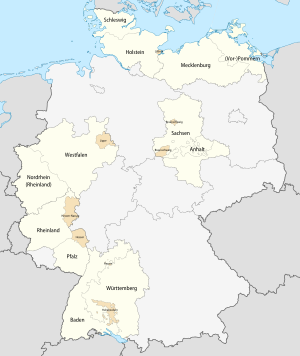
Origin of the name components of countries with double names
Comparison of the Länder structure of the Weimar Republic and the Federal Republic of Germany
| Area in km² | Weimar Republic | Federal Republic of Germany | Inhabitants (1925 and 2018 respectively) | Weimar Republic | Federal Republic of Germany |
| >250.000 | 1 | 0 | >30.000.000 | 1 | 0 |
| 50.000–100.000 | 1 | 1 | 10.000.000–20.000.000 | 0 | 3 |
| 20.000–50.000 | 0 | 7 | 5.000.000–10.000.000 | 1 | 2 |
| 10.000–20.000 | 5 | 4 | 2.000.000–5.000.000 | 3 | 7 |
| 5.000–10.000 | 2 | 0 | 1.000.000–2.000.000 | 3 | 2 |
| 2.000–5.000 | 3 | 1 | 500.000–1.000.000 | 4 | 2 |
| 1.000–2.000 | 3 | 0 | 100.000–500.000 | 5 | 0 |
| <1.000 | 4 | 3 | <100.000 | 2 | 0 |
(In the column "Weimar Republic", the Saar region was counted as one country).
Statistics on German countries
- According to unemployment rate
- According to at-risk-of-poverty rate
- by expenditure on research and development
- By population
- According to population density
- according to gross domestic product
- According to household income
- According to exports
- by fertility rate
- by area
- according to HDI (Human Development Index)
- According to national budget
- According to life expectancy
- According to tax revenue
- by suicide rate
- According to indebtedness
See also
- Political System of the Federal Republic of Germany
- Federalism reform
- Distribution of seats in the German state parliaments
- List of coats of arms in Germany
- ISO 3166-2:EN (standardised abbreviations)
Questions and Answers
Q: How many states does the Federal Republic of Germany have?
A: The Federal Republic of Germany has 16 states.
Q: Which state is the biggest in Germany?
A: Bavaria is the biggest state in Germany.
Q: Which state is the smallest in Germany?
A: Bremen is the smallest state in Germany.
Q: When were most of the German states created?
A: Most of the German states were created after the Second World War.
Q: How far back can the historical roots of some German states be traced?
A: The historical roots of some German states can be traced back to the early Middle Ages.
Q: When did the Saar join the Federal Republic of Germany?
A: The Saar joined the Federal Republic of Germany in 1957.
Q: How many states joined the Federal Republic of Germany after the German reunification?
A: Six new states, including the reunited city of Berlin and the territory of the former German Democratic Republic, joined the Federal Republic of Germany after the German reunification in 1990.
Search within the encyclopedia
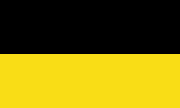
.svg.png)
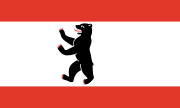
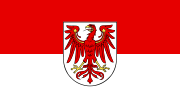
.png)
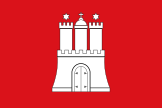
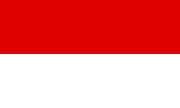
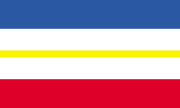
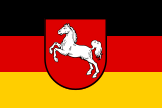
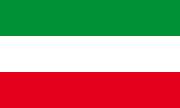
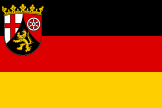
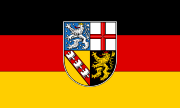
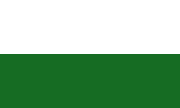
.svg.png)
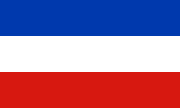
.png)